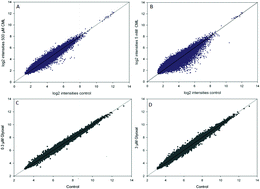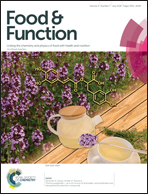Impact of free Nε-carboxymethyllysine, its precursor glyoxal and AGE-modified BSA on serotonin release from human parietal cells in culture
Abstract
Advanced glycation end products (AGEs) are frequently encountered in a western diet, in addition to their formation in vivo. N-Epsilon-carboxymethyllysine (CML), one of the chemically diverse compounds formed in the reaction between reducing carbohydrates and amines, is often used as a marker of advanced glycation, and has been shown to stimulate serotonin release from cells representing the central (SH-SY5Y cells) and the peripheral (Caco-2 cells) serotonin system in vitro. Here, we investigated the effect of glyoxal, free CML, and protein-linked AGE-BSA on serotonin release from human gastric tumour cells, which originate from an adenocarcinoma of the stomach and have recently been shown to be capable of serotonin synthesis and release. Microarray experiments showed both CML and glyoxal to alter genes associated with serotonin receptors. Furthermore, treatment with glyoxal resulted in a small change in RAGE expression while CML did not alter its expression. On a functional level, treatment with 500 μM CML increased extracellular serotonin content by 341 ± 241%, while treatment with 1 mg mL−1 AGE-BSA led to a reduction by 49 ± 11% compared to non-treated cells. The CML-induced serotonin release was reduced by the HTR3 antagonist granisetron. Incubation with the RAGE antagonist FPS-ZM1 abolished the effect of AGE-BSA on serotonin release, while no impact on CML-induced serotonin release was observed. Furthermore, treatment with 5 mM CML stimulated proton secretion as a functional outcome measure, assessed using a pH sensitive dye. Taken together, these results indicate a likely HTR3-mediated, RAGE-independent effect of free CML on serotonin release and a RAGE-dependent mechanism for the protein linked AGE-BSA.



 Please wait while we load your content...
Please wait while we load your content...